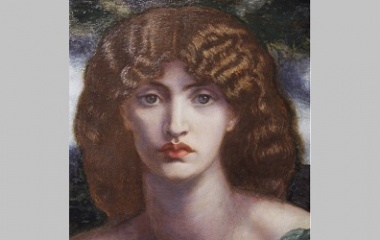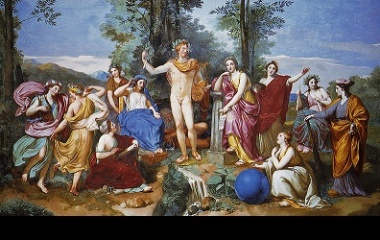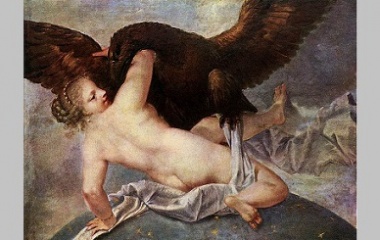- Pronunciation: nee-mos-uh-nee
- Origin: Greece
- Role: Titaness of memory
- Parents: Uranus and Gaea
- Siblings: 11, including Oceanus, Hyperion, Kronos, Theia, Phoebe and Rhea
- Children: The 9 Muses
Who Is Mnemosyne?
In the beginning, there was only the primordial being, then the first born gods came, heaven (Uranus) and earth (Gaea). Together, they had 12 children, the Titans and the Titanesses. Among the first 12 was Mnemosyne, the Titaness of memory. Remembrance was an essential skill in ancient Greece, since it predated written language, and was the only way of recalling what had been spoken or keeping track of things.
Mnemosyne was given the important task of naming all the objects of the Earth, so she is additionally credited with giving humans the ability of conversation and reasoning. She was considered to be the most powerful goddess of her time. However, after the Titanomachy, the great war of the gods, the Titans were sent to the underworld and the Titanesses were largely forgotten after the rise of the Olympian gods and goddesses.
Despite her very important initial role, much of Mnemosyne’s contribution is muted in mythology, and her main legacy is her motherhood of the nine muses.
Origin
The first generation of Greek Titans and Titanesses were the children of the Protogonoi (first-born gods): Uranus (Heaven) and Gaea (Earth). There were 12 giant Titan gods, six brothers and six sisters,living on Mount Othrys.
Menmoysne was the power that controlled all of memory in the universe. It was a huge responsibility remembering all the rules of the world, as well as all the cycles of life, plus all that was spoken because there was not yet a written form of language. It is the human ability to remember and reason that differentiates people from the rest of the world’s creatures. It’s the very basis of society and civilization.
After the 10-year Titanomachy, the power transferred from the rule of the Titans over to the Olympians and their leader Zeus. The male Titans were banished to the underworld, but the females were allowed to remain free. Zeus was a bit of a lady’s man, and the females had not participated in the actual fighting of the war. Their roles, however, were largely taken over by the new generation of Olympian goddesses.
The ancient Greeks believed that after death people crossed over to the Underworld of Hades. It was at this time that they were given the choice of drinking from the river Lethe, whose waters caused forgetfulness and the opportunity to leave the painful memories of their lifetime behind, or to drink from the spring of Mnemosyne and remember.
The souls who made the choice to forget were reborn and returned to Earth to learn the lessons they still needed. Those who made the choice to remember were sent to the Elysian Fields, where they would live for eternity in happiness and tranquility.
The Nine Muses
After the war, Zeus became the established ruler of the gods. Despite having immortality and status, he was concerned that his victory over the Titans and his other great accomplishments might be forgotten.
Interested in preserving these wonderful memories, he went to visit Mnemosyne disguised as a shepherd, with a plan to seduce her. They stayed together for nine nights before he left to head back to Mount Olympus. Although well known for his extramarital affairs, this interlude predated his marriage to the goddess Hera.
Mnemosyne became the mother of nine daughters known as the Muses. Zeus was delighted. They later stayed by his throne, the nine beautiful, carefree and inspirational daughters. The Muses entertained his guests with great stories and songs of his accomplishments and the tales of creation.
They are the famous nymph goddesses that are the inspiration for all of literature, science and the arts.
- Clio, the muse of history. In ancient Greece, the study of history was called Clio, derived from the word kleos, meaning heroic.
- Euterpe, the muse of music discovered musical instruments.
- Calliope, the muse of epic poetry was Homer’s inspiration for the Iliad and the Odyssey. She is the most famous of all the muses.
- Erato, the muse of lyric poetry and protector of love and love poems. Her name is derived from the word eros which means the feeling of falling in love.
- Thalia, the muse of and discoverer of comedy, agricultural science and geometry.
- Melpomene, the muse of and protector of tragedy, and the opposite of Thalia.
- Polymnia, the muse of divine hymns and meditation.
- Terpsichore, the muse of dancing, the harp and education.
- Urania, the muse of astronomy and protector of the stars and planets.
Historical Influence
In addition to being the inspiration for art, science and creativity, the muses were the subject of many classic Renaissance paintings. Each daughter of Mnemosyne was identified with an icon that represented her gifts and talents. Calliope held a writing tablet, Clio held books, Urania held a globe and a compass, Polymnia, always deep in thought, wears a veil, Euterpe holds a flute, Thalia and Melpomene wear the classical theater masks of comedy and tragedy, and Erato wears a crown of roses.
In the legends, Apollo, the god of music, poetry and prophecy, was the leader of the muses. He loved all the muses for their unique inspiration and never seemed to favor one over the others.
The word museum is derived from the word muse, as are the words, music, and amusing.
From the name Mnemosyne comes the word mnemonic, which is a methodology to aid with remembering.
The basis of all human knowledge is not separable from memory, for all things learned must be recalled. Perhaps if there was ever a goddess that deserves to be remembered, it’s the Titaness Mnemosyne, the mother of language and the arts.










